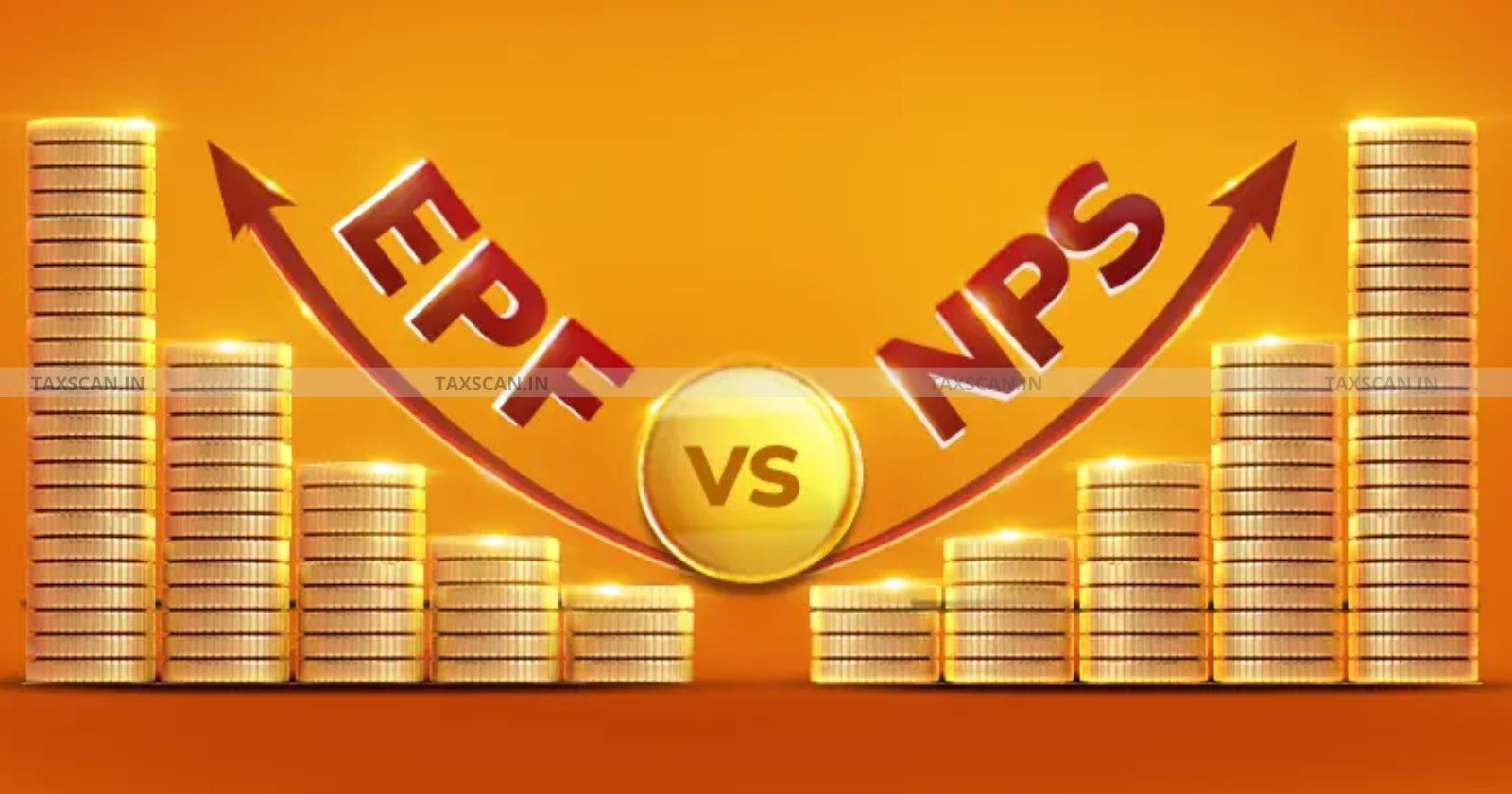NPS vs EPF: Comparing Best Retirement Savings Plan under New Tax Regime
The article compares the NPS and EPF under the new tax regime, highlighting their differences, tax implications, and factors to consider for retirement planning

NPS vs EPF – Retirement Savings Plan – Tax Regime – taxscan
NPS vs EPF – Retirement Savings Plan – Tax Regime – taxscan
Planning for retirement is important to ensure financial stability and peace of mind in one's later years. In India, the National Pension System (NPS) and the Employees' Provident Fund (EPF) are two prominent options for retirement savings. With the new tax regime in place, it's important to understand the differences between NPS and EPF to make an informed decision. This article provides a comprehensive comparison of the two schemes, highlighting their pros and cons.
What is NPS?
The National Pension System (NPS) is a voluntary retirement savings scheme regulated by Pension Fund Regulatory and Development Authority (PFRDA). It offers market-linked returns and requires mandatory annuity purchase at retirement.
What is EPF?
The Employees' Provident Fund (EPF) is a mandatory retirement savings scheme managed by the Employees' Provident Fund Organization (EPFO). It offers guaranteed returns and full withdrawal after retirement.
Become a PF & ESIC expert with our comprehensive course - Enroll Now
Employer Contribution
- NPS: Employers can contribute up to 14% of an employee's basic salary towards NPS. This contribution is deductible from the employee's taxable income, providing a tax-saving advantage.
- EPF: Employers contribute 12% of the employee's basic salary or Rs. 15,000, whichever is higher, to the EPF. This contribution is part of the Cost-to-Company (CTC) but remains tax-exempt.
Employee Contribution
- NPS: There is no specific limit on the employee's contribution to NPS, and it can be nil if desired.
- EPF: Employees are required to contribute 12% of their basic salary or Rs. 15,000, whichever is higher, to the EPF.
Tax Implications
- Employer Contribution to NPS: The employer's contribution to NPS is deductible from the employee's taxable income.
- Employee Contribution to NPS: The employee's contribution to NPS is not deductible under the new tax regime.
- Employer Contribution to EPF: The employer's contribution to EPF is tax-exempt and not counted as part of the employee's taxable income.
- Employee Contribution to EPF: The employee's contribution to EPF is not deductible under the new tax regime.
Note: Excess contributions to NPS and EPF above Rs. 7.5 lakh per annum (aggregate) will be taxable.
Returns
- NPS: Returns in NPS are market-linked, which means they fluctuate based on market performance. This could result in potentially higher returns but also comes with associated market risks.
- EPF: Returns in EPF are declared annually by the Employees' Provident Fund Organization (EPFO). These returns are generally stable and guaranteed by the government.
Portability
- NPS: Post-employment, employees can switch from the corporate model to the all-citizen model of NPS by submitting the Inter-Sector Shifting (ISS-1) form.
- EPF: Portability is not allowed in EPF. Employees cannot transfer their EPF account to another retirement savings scheme.
Withdrawal Rules
- NPS: Employees can withdraw up to 25% of their contributions at any time, up to three times, for specific purposes such as medical treatment, education, or purchasing a house.
- EPF: Employees can partially withdraw funds from their EPF account while in job for specific purposes like marriage, education, or medical expenses. They can also withdraw 100% of their EPF balance if they are unemployed for two months or more.
Withdrawal After Retirement
- NPS: Upon retirement, 60% of the NPS corpus can be withdrawn tax-free, while the remaining 40% must be used to purchase annuities for a pension.
- EPF: After five years of continuous service, employees can withdraw 100% of their EPF balance tax-free.
Pension Benefits
- NPS: The pension amount depends on the corpus accumulated and the annuity plan chosen by the retiree.
- EPF: The pension is capped at Rs. 7,500 per month under the Employees' Pension Scheme (EPS) which is part of the EPF.
Become a PF & ESIC expert with our comprehensive course - Enroll Now
Scenario: Tax Saving in the New Tax Regime
Let's consider a scenario where an employee has a Cost-to-Company (CTC) of Rs. 24 lakh, a gross salary of Rs. 22 lakh, and a monthly basic salary of Rs. 50,000.
If the employee opts for both EPF and NPS:
- Employee EPF contribution: Rs. 6,000 (12% of monthly basic salary)
- Employer EPF contribution: Rs. 6,000 (12% of monthly basic salary)
- Employer NPS contribution: Rs. 7,000 (14% of monthly basic salary)
Total yearly contribution: Rs. 2.28 lakh Tax-free salary: Rs. 1.56 lakh 6.5% of the CTC is tax-free.
If the employee only opts for NPS:
- Employer NPS contribution: Rs. 7,000
Total yearly contribution: Rs. 84,000 3.5% of the CTC is tax-free.
Which One is Better for You?
- Choose NPS if you want higher returns and are okay with market risks.
- Choose EPF if you prefer stability and guaranteed returns.
Final Comparison Table
| Feature | NPS | EPF |
| Returns | Market-linked | Fixed & guaranteed |
| Withdrawal | Partial allowed | Partial allowed |
| Retirement Taxation | 60% tax-free, 40% annuity | 100% tax-free |
| Employer Contribution | Up to 14% | 12% |
Conclusion
Both NPS and EPF have their own advantages and limitations. The decision to choose between the two schemes should be based on individual financial goals, risk appetite, and retirement planning. NPS offers higher potential returns with market-linked investments and greater flexibility in withdrawals, while EPF provides stable returns and tax-free withdrawals with a government guarantee.
Support our journalism by subscribing to Taxscan premium. Follow us on Telegram for quick updates


